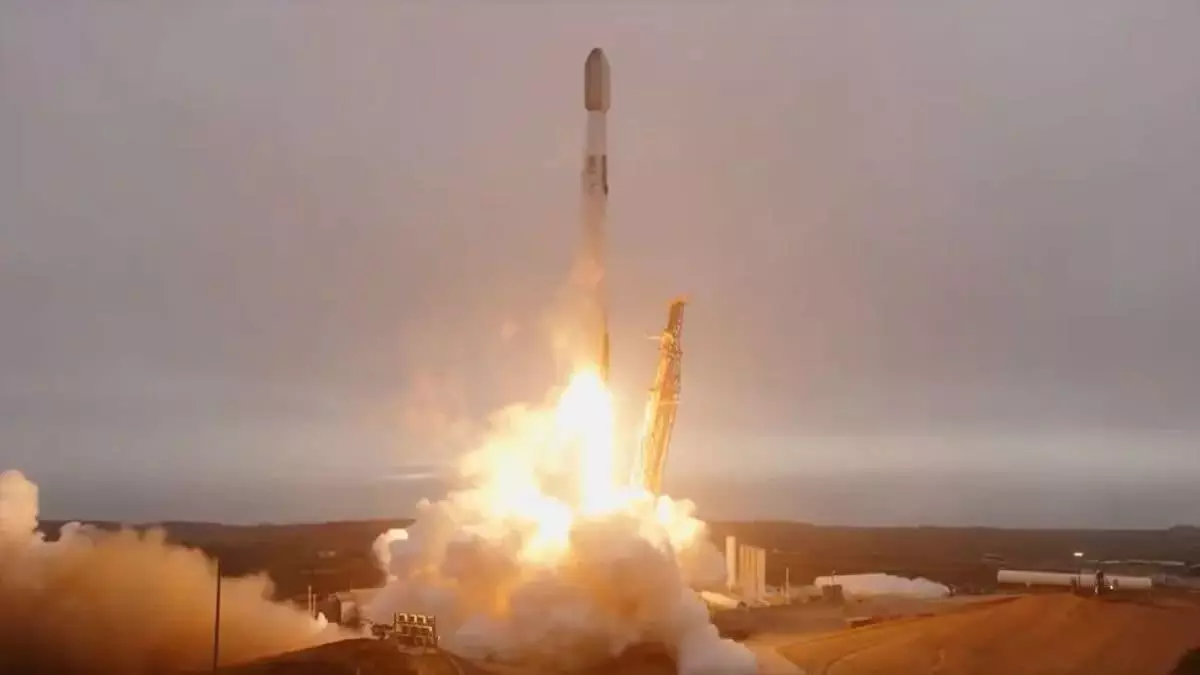In a truly awe-inspiring feat of engineering and ambition, SpaceX has once again showcased its dominance in the realm of satellite launches with the recent deployment of 26 new Starlink satellites. Launched from Vandenberg Space Force Base, this mission not only highlights the company’s relentless pursuit of innovation but underscores its commitment to revolutionizing global internet access. With 7,600 active satellites now in orbit, SpaceX is inching closer to its vision of a world where high-speed connectivity is available to even the most remote locations.
A Milestone for Reusability
A significant aspect of this latest launch is the remarkable reuse of the Falcon 9 booster, known as B1081, which successfully completed its 15th flight. This achievement is a testament to SpaceX’s engineering prowess and its pioneering approach to reducing the costs associated with space travel. The ability to repeatedly utilize rocket components not only enhances the efficiency of launches but also embodies a paradigm shift in how we understand space operations. The industry’s previous norms, which oftentimes viewed rockets as one-time-use tools, have been fundamentally altered by SpaceX’s relentless push for reusability—an effort that should be applauded by all who care about sustainable progress in aerospace technology.
Near-Universal Connectivity: A Double-Edged Sword
However, while the ambition behind the Starlink project is commendable, it is crucial to examine the implications of such extensive satellite deployment. The concept of providing internet access to underserved areas is undoubtedly noble. Yet, one must raise concerns about the potential consequences of filling our skies with thousands of satellites. The exponential increase in orbital debris could pose significant risks to both existing satellites and future space missions. Moreover, there is the ethical discussion surrounding the digital divide: as Starlink expands its services, will it inadvertently privilege those who can afford premium satellite access while leaving behind those unable to participate in this digital evolution? The last thing we need is a bifurcated internet landscape, where access is a luxury rather than a right.
Forward-Thinking Applications for Tomorrow’s Needs
Nevertheless, the potential applications of SpaceX’s Starlink initiative cannot be understated. By facilitating ground-breaking technologies like in-flight internet connectivity and emergency communication systems, SpaceX is not merely deploying satellites; it is catalyzing a transformation of how we perceive connectivity. The looming possibility of seamless communication during crises opens up opportunities that can save lives and bolster disaster response efforts, which is undeniably a step in the right direction.
In the grander scheme of things, Starlink represents more than just a scheme to blanket the globe in internet access. It is an emblematic effort that calls for a reimagination of our relationship with technology and its capacity to solve irrefutable societal issues. Yet, for all its accolades, it compels us to confront our realities—balancing progress with responsibility, and ambition with ethics.

Leave a Reply